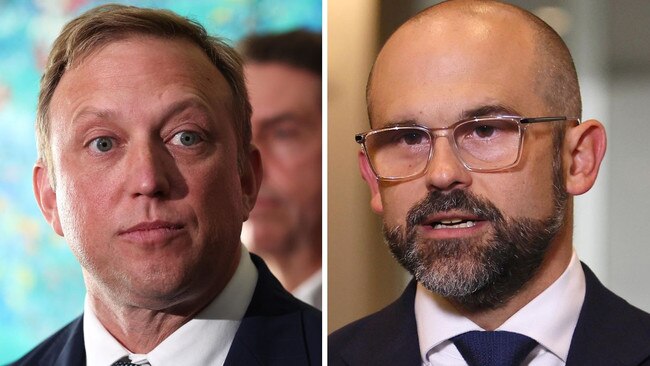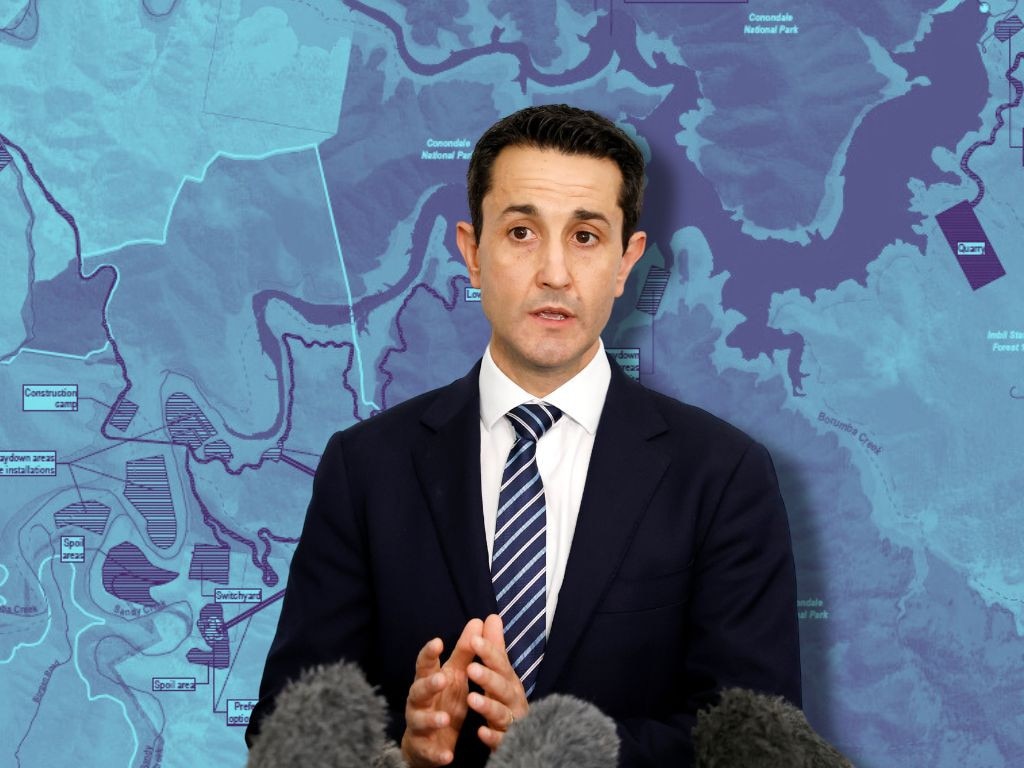Queensland Treasurer David Janetzki says the path to surplus is now a ‘serious challenge’
The ousted Labor government’s pre-election promise of returning the budget to surplus within two years has been shattered, with the state to have its largest deficits in history.

The ousted Queensland Labor government’s pre-election promise of returning the budget to surplus within two years has shattered, with Treasury’s mid-year fiscal review to reveal the state will be plunged into its largest deficits in history.
Ahead of the new Liberal National Party’s first budget update since its election victory in October, Treasurer David Janetzki told The Australian the former Miles government had failed to allocate funding to some of its signature policy initiatives, including 50c public transport fares.
Treasury is now forecasting four successive multibillion-dollar deficits.
Operating surpluses of $900m and $2bn projected for 2026-27 and 2027-28 have been wiped out, replaced with two consecutive years of $9.2bn deficits.
“The forecast deficit in 2025–26 is $6.9bn, and the operating deficits of $9.2bn projected each year in 2026–27 and 2027–28 would be the largest deficits in Queensland history in dollar terms, and equal to the 2019–20 result as a proportion of revenue,” the Treasury analysis states.
Huge cost-overruns on the state’s biggest infrastructure programs has also pushed Queensland into a deeper financial hole, with the four-year “Big Build” blowing out by $22.6bn to $129.9bn.
Blowouts on the state’s capital program include a $4.2bn escalation on the Borumba pumped hydro station, a $1.3bn increase to hospital upgrades and a $494m lift to the Cross River Rail project.
Thursday’s budget update will heap incredible pressure on the newly elected Crisafulli government to find a way to rein in record spending without axing crucial projects, making deep cuts to the public service or adding to the surging debt bill.
Premier David Crisafulli has said debt and taxes would be lower under his government but has ruled out asset sales and public sector cuts.
Before the election, he gave an unprecedented promise to honour all of Labor’s budgeted spending commitments made over the forward estimates, including all infrastructure projects and funding to social services.
Delivering his budget update on Thursday after weeks of backroom number-crunching by Treasury, Mr Janetzki will reveal that the path to surplus will be a “serious challenge” and argue that the former Miles government failed to fund promised services across multiple departments.
“The mid-year fiscal and economic review is an upfront and frank document that reveals the financial legacy of the Labor government,” he told The Australian.
“Labor’s funding cliffs left Queenslanders’ essential social services on the verge of collapse, including homes for young people in the care of Child Safety, homelessness services and police officers. These figures prove Labor’s projected surpluses in 2027 and 2028 were also a fairytale.
“Knowing what we know now, it is clear that a pathway to surplus across the forwards is a serious challenge.”
Mr Janetzki lashed numerous blowouts across Labor’s “Big Build”, saying it “could never have been achieved”.
“Tens of billions of dollars in project cost overruns demonstrate their capital works program was a sham,” he said. “Labor can never be trusted again.”
During the election campaign, Mr Janetzki vowed to create an in-house consulting service, modelled off Jim Chalmers’s Australian Government Consulting, which he said would save $6.8bn across the forward estimates.
Deputy Opposition Leader Cameron Dick, who delivered five budgets as Labor treasurer, said Thursday’s fiscal review would be a “real test” for Mr Janetzki and whether his consulting group could find almost $7bn in savings, as promised.
“So he has to do that when the group hasn’t even been established,” he said.
“I think that the $7bn in savings he promised 36 hours before the election were ultimately undeliverable.”
The new government is also facing a major fight with the public service unless it agrees to deliver big pay rises to teachers, police and nurses, with unions already threatening mass rolling strike action.
Negotiations on new three-year public sector pay deals began this month and Mr Crisafulli is desperate to distance himself from former premier Campbell Newman, who oversaw mass cuts to the public service between 2012 and 2015.
The former Labor government’s wage policy, set in its June 2024 budget, allowed for a minimum annual wage increase of 2.5 per cent but unions have already indicated they will be pushing for larger increases to help with cost-of-living pressures and to stop staff from moving to the private sector or interstate.
Taxpayers will be slugged an extra $352m a year for every percentage point salary rise above 2.5 per cent.
S&P Global Ratings confirmed Queensland’s AA+ rating in early September on the expectation that debt levels would peak at about 140 per cent of operating revenues and that the budget would remain in cash surplus.






To join the conversation, please log in. Don't have an account? Register
Join the conversation, you are commenting as Logout